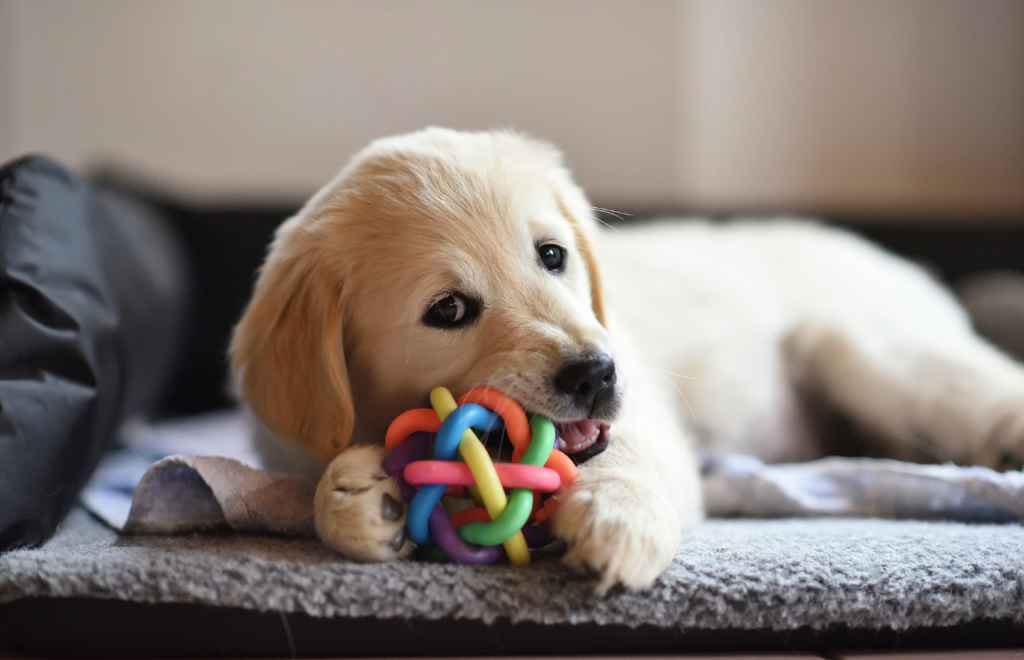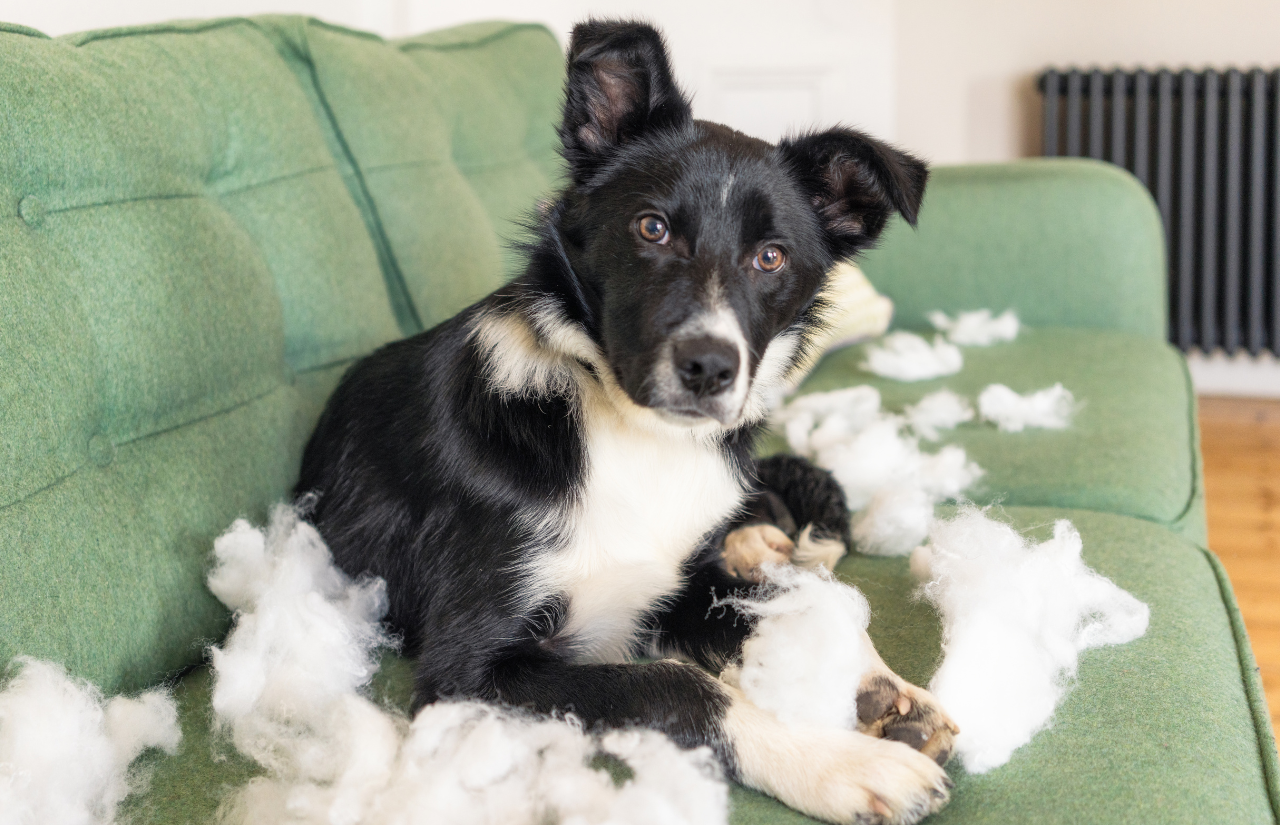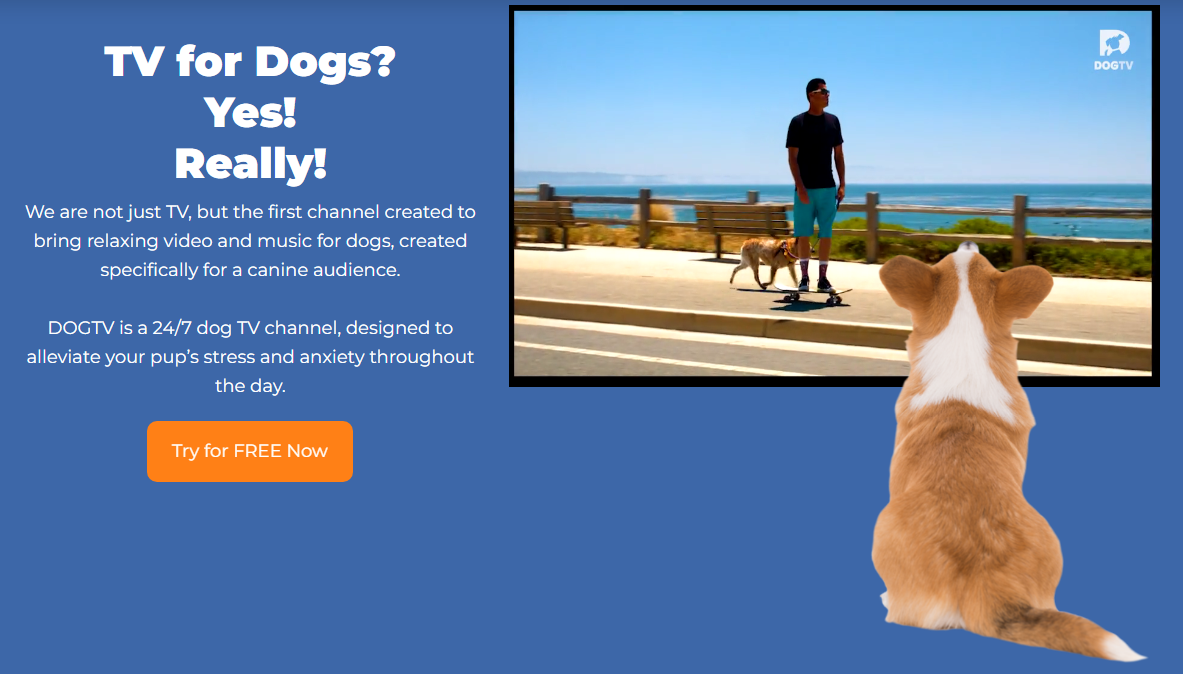Every dog parent knows the heart-wrenching sight of their furry friend’s sad eyes as they head out the door. The whines, the barks, and the chewed-up shoes all point to one thing: separation anxiety. It’s a common issue many dogs face, especially if they’re deeply bonded with their humans. But fear not, fellow dog lovers! There are simple and effective solutions to help ease your pup’s anxiety and ensure they’re calm and content even when you’re away. In this article, we’ll dive into three fantastic solutions, including the innovative DOGTV, to help your dog combat separation anxiety.
Table of Contents
What is Dog Separation Anxiety?
1st Solution: DOGTV
2nd Solution: Interactive Toys
3rd Solution: Comfort Items
Additional Tips for Easing Separation Anxiety
Conclusion
What is Dog Separation Anxiety?
Dog separation anxiety is a prevalent emotional and behavioral concern that affects a significant number of dogs worldwide. It’s a distressing condition where a dog becomes anxious and exhibits problematic behaviors when separated from their owner or primary caregiver. But what exactly triggers this anxiety, and how can you recognize the signs in your furry friend?
Understanding the Root Causes
Several factors can contribute to the development of separation anxiety in dogs. Some dogs may be naturally predisposed to anxiety due to their genetics, while others might develop it as a result of early life experiences. Puppies separated from their mothers too early, dogs with a history of abandonment, or those who’ve spent time in shelters might be more prone to separation anxiety. Additionally, a sudden change in routine, moving homes, or the loss of a family member can also trigger this condition.
Recognizing the Symptoms
Symptoms of separation anxiety can vary in intensity and manifestation. Some common signs include:
- Excessive Barking or Howling: If your dog starts barking or howling soon after you leave and continues for prolonged periods, it might be a sign of separation anxiety.
- Destructive Behaviors: Dogs with separation anxiety often resort to chewing furniture, digging at doors, or destroying household items in an attempt to cope with their stress.
- Pacing: An anxious dog might pace in a fixed pattern or circle when left alone.
- Accidents Indoors: Even well-trained dogs might urinate or defecate inside the house when dealing with separation anxiety.
- Attempts to Escape: In severe cases, dogs might try to escape from the house or confinement area, potentially injuring themselves in the process.
The Emotional Toll
It’s crucial to understand that dogs with separation anxiety aren’t acting out of spite or mischief. They genuinely feel distressed and panicked in the absence of their caregivers. Their behaviors are a desperate attempt to cope with overwhelming feelings of fear and anxiety. As dog lovers, it’s our responsibility to recognize these signs and provide the necessary support and solutions to help our four-legged friends navigate their emotions.
Now that we have a deeper understanding of dog separation anxiety, let’s explore some effective solutions to address and alleviate these concerns.
1st Solution: DOGTV
What is DOGTV?
DOGTV is a revolutionary television channel tailored specifically for our canine companions. With content rooted in science, DOGTV offers programs designed to soothe and calm dogs, making it an excellent solution for those suffering from separation anxiety. The channel’s relaxation programs feature slow-moving, soothing scenes combined with healing sound frequencies, ensuring that your dog feels at ease even in your absence.
>> Discover the magic of DOGTV! Start your Free Trial today! <<
DOGTV Review: How Effective Is It?
Based on numerous DOGTV reviews from pet parents worldwide, it’s evident that DOGTV has made a significant impact in alleviating stress in dogs. Millions of pet parents have turned to DOGTV to help soothe their dog’s anxiety. The channel’s patented programming has been relieving anxiety in dogs (and their humans!) for over ten years. For instance, Jennifer, a pet parent, shared her experience with DOGTV, stating that after subscribing, she could leave her 8-month-old Australian Shepherd puppy at home without worries. The channel helped stimulate her puppy throughout the day, keeping him out of trouble and ensuring he was okay at home.
DOGTV Free Trial: A Risk-Free Way to Test Its Benefits
If you’re still on the fence about whether DOGTV is the right solution for your furry friend, the good news is that they offer a DOGTV free trial. This 3-day trial allows you to test out the scientifically-backed programming and see its effects on your dog firsthand. After the trial, you can choose from various subscription plans, including a monthly or annual subscription, to continue providing your dog with calming and engaging content.
Why Choose DOGTV?
Separation anxiety can take a toll on both dogs and their owners. With DOGTV, you have a tool that’s backed by science and proven by countless DOGTV reviews to help alleviate this anxiety. The channel’s relaxation programs, in particular, are designed to cater to a dog’s visual and auditory senses, ensuring they remain engaged and calm. Plus, with the DOGTV free trial, you can experience the benefits risk-free, making it a no-brainer for any pet parent looking to ease their dog’s separation anxiety.
2nd Solution: Interactive Toys
The Importance of Mental Stimulation
Just like humans, dogs thrive on mental stimulation. Keeping their brains active and engaged can prevent feelings of boredom, which often exacerbate separation anxiety. Interactive toys serve as an excellent tool to challenge and entertain dogs, ensuring they’re mentally stimulated even when you’re not around.
Types of Interactive Toys
Interactive toys come in various shapes and sizes, each designed to cater to different aspects of a dog’s cognitive abilities:
- Treat-Dispensing Toys: These toys release treats when manipulated correctly. They challenge your dog to figure out how to get the reward, keeping them engaged for extended periods.
- Puzzle Toys: These toys require dogs to solve puzzles to access treats. They come in varying difficulty levels, ensuring that your dog remains challenged as they become more adept at solving them.
- Hide and Seek Toys: These toys allow you to hide treats or smaller toys inside larger ones. Your dog then has to figure out how to extract the hidden treasures, providing both mental and physical stimulation.

Benefits of Interactive Toys
Interactive toys offer a plethora of benefits for dogs, especially those prone to separation anxiety:
- Distraction: Engaging with these toys can distract your dog from the fact that you’re not around, reducing feelings of loneliness and anxiety.
- Energy Expenditure: Working on solving puzzles or manipulating toys to get treats can be tiring. A mentally exhausted dog is less likely to exhibit anxious behaviors.
- Boosted Confidence: Successfully solving puzzles or getting treats from toys can boost a dog’s confidence, making them feel more secure even in your absence.
Choosing the Right Toy for Your Dog
When selecting an interactive toy, consider your dog’s size, breed, and temperament. Ensure the toy is durable enough to withstand your dog’s chewing strength and is appropriately sized to prevent choking hazards. It’s also essential to regularly inspect toys for wear and tear, replacing them when necessary to ensure your dog’s safety.
Conclusion
Interactive toys are more than just playthings; they’re tools that can significantly improve your dog’s mental well-being. For dogs with separation anxiety, these toys can be a lifeline, providing the necessary distraction and stimulation to keep anxiety at bay. As a dog parent, investing in a variety of interactive toys ensures your furry friend remains happy, engaged, and anxiety-free even when you’re not around.
3rd Solution: Comfort Items
Seeking Solace in Familiarity
For many dogs, comfort comes from familiarity. The scent of their favorite human, the feel of their cherished blanket, or the sound of a familiar toy can provide immense solace during times of stress or anxiety. Comfort items play a pivotal role in offering this sense of familiarity and security, especially when dogs are left alone.
The Power of Scent
Dogs have an incredibly keen sense of smell, often many times more powerful than that of humans. Familiar scents can evoke feelings of safety, security, and love. Leaving an item of your clothing, like a worn t-shirt or a used pillowcase, can work wonders in calming an anxious dog. The scent, reminiscent of their favorite human, can provide a comforting presence, making them feel like you’re still close by.
Calming Beds and Blankets
Specialized calming dog beds and blankets are designed to provide a snug and secure feeling. These items often feature raised rims or borders, mimicking the sensation of being cuddled or hugged. The soft, plush material can also remind dogs of their time as puppies, snuggled up with their littermates. Investing in such a bed or blanket can offer a safe haven for your dog, a place where they can retreat to when feeling anxious or overwhelmed.

Soft Toys and Security Objects
Many dogs have a favorite toy or object that they carry around or sleep with. These items, often referred to as “security objects,” can provide a sense of comfort and routine. If your dog has such an item, ensure it’s always accessible, especially when you’re not around. If they don’t, introducing a soft, plush toy can be a good idea. Over time, as the toy picks up familiar scents, it can become a cherished comfort item for your dog.
Calming Music and Sound Machines
Sound can also play a role in comforting anxious dogs. Soft, calming music or white noise machines can drown out potentially distressing external noises, like traffic or construction sounds. Some dogs find solace in listening to classical music or specially curated playlists designed for canine relaxation. Sound machines that mimic heartbeats can also be effective, especially for puppies, as they replicate the comforting sound of their mother’s heartbeat.
Conclusion
Comfort items tap into a dog’s innate senses and memories, providing solace during times of stress. They offer a non-invasive, natural way to alleviate feelings of anxiety and loneliness. By understanding your dog’s unique preferences and needs, you can curate a collection of comfort items that ensure they feel loved, safe, and secure, even in your absence.
Additional Tips for Easing Separation Anxiety
Gradual Desensitization
One of the most effective ways to address dog separation anxiety is through gradual desensitization. This involves exposing your dog to the triggers of their anxiety in controlled, increasing durations. Start by leaving your dog alone for just a few minutes and gradually increase the time as they become more comfortable. Over time, this can help them understand that your departures are temporary and that you will always return.
Establish a Routine
Dogs thrive on routine. Establishing a consistent daily schedule can provide a sense of security and predictability for your dog. Regular feeding times, walk schedules, and play sessions can help anchor your dog’s day and reduce the uncertainty that might contribute to their anxiety.
Stay Calm During Departures and Arrivals
It’s natural to want to comfort your dog when you see them anxious. However, making a big fuss during departures or arrivals can inadvertently reinforce their anxiety. Instead, aim for calm, low-key exits and entrances. This can help your dog understand that being alone is just a regular part of the day and not a cause for distress.
Consider Doggy Daycare or Playdates
If your dog’s separation anxiety is severe, consider enrolling them in a doggy daycare or setting up regular playdates with other dogs. This provides them with social interaction and stimulation, reducing the loneliness they might feel in your absence.
Seek Professional Help
If you’ve tried multiple strategies and still see no improvement in your dog’s separation anxiety, it might be time to seek professional help. A veterinarian or a certified dog behaviorist can offer insights into the root causes of the anxiety and provide tailored solutions. They might also recommend therapeutic interventions or medications to help manage the anxiety.
Stay Informed and Educated
Understanding dog separation anxiety is the first step towards addressing it. Stay informed about the latest research, techniques, and solutions related to separation anxiety in dogs. Joining online forums, attending workshops, or reading books on the subject can provide valuable insights and support from fellow dog parents facing similar challenges.
Conclusion
Dealing with a dog suffering from separation anxiety can be challenging, but with patience, understanding, and the right strategies, it’s manageable. Remember, every dog is unique, and what works for one might not work for another. It’s essential to be patient, consistent, and willing to try different approaches until you find what’s best for your furry friend. With time and effort, you can help your dog overcome their separation anxiety and ensure they lead a happy, stress-free life.
Conclusion
Dealing with dog separation anxiety is a journey that many pet parents embark on, seeking ways to provide comfort and solace to their beloved furry friends. From the numerous DOGTV reviews that highlight its effectiveness to the DOGTV Free Trial that offers a risk-free glimpse into its benefits, it’s evident that innovative solutions like DOGTV can play a pivotal role in addressing this challenge. But it’s not just about one solution; it’s about a holistic approach that combines various strategies, from interactive toys to comfort items, to tackle dog separation anxiety from multiple angles.
Understanding the root causes and manifestations of dog separation anxiety is the first step in this journey. It equips pet parents with the knowledge to recognize the signs early and take proactive measures. The world of pet care has evolved tremendously, with science-backed solutions like DOGTV leading the charge in offering respite to anxious dogs. The positive DOGTV reviews and the opportunity to test its benefits through the DOGTV Free Trial further underscore its potential in this domain.
However, it’s essential to remember that every dog is unique. What works wonders for one might not resonate with another. It’s a process of trial and error, understanding your dog’s specific needs, and tailoring solutions accordingly. Whether it’s the calming visuals of DOGTV, the mental engagement of interactive toys, or the soothing presence of a familiar-scented item, the goal remains the same: to alleviate the distress associated with dog separation anxiety and ensure our canine companions feel loved, secure, and content, even in our absence.
In conclusion, while dog separation anxiety can be daunting, with the right tools, strategies, and a dash of patience, it’s a challenge that can be overcome. As pet parents, our dogs’ well-being is paramount, and with the plethora of resources available today, from DOGTV reviews to expert advice, we’re better equipped than ever to ensure our dogs lead happy, anxiety-free lives.


